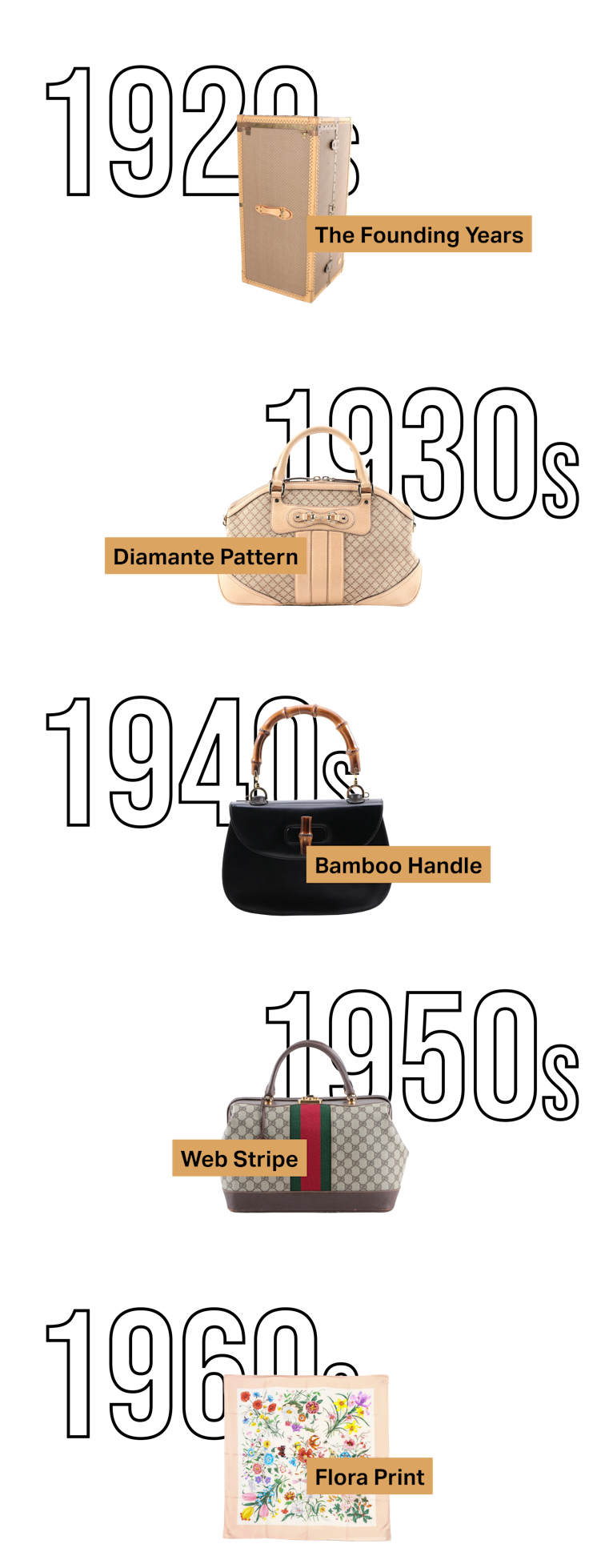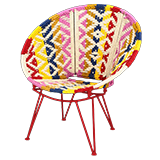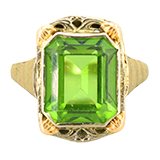100 Years of Gucci: Fine Italian Luxury
Celebrate a century of Gucci opulence with us.
1921
The Founding Years
Founded in 1921 by Guccio Gucci in Florence, the iconic fashion house became known for fine leather luggage for the upper class and artisan crafted leather goods for horseback riders. Many of Gucci’s designs throughout time have been a nod to their first clients. This includes their unique horsebit icon, the saddle bag, the web stripe and many other symbols with equestrian origins.
1930s
Diamante Pattern
Throughout Mousilini’s reign, sanctions were levied against Italy, making fine leather a scarce material. During this period Gucci was forced to innovate and introduce new materials including canvas, hemp and jute; the fashion house continues to use these materials to this day. It was during this time that Gucci introduced their iconic “Diamante” diamond pattern on luggage made from hemp.
1940s
Bamboo Handle
The aftermath of WWII furthered material scarcity issues for much of the fashion world in the 1940s. Once again Gucci’s artisans resolved the issue through creativity by utilizing alternative materials. The bamboo handle, now instantly recognized as a Gucci classic, was created with bamboo easily imported from Japan after the war.
The original bamboo handle bag was made from pigskin and was designed to mimic the curved shape of horse saddles. The beautiful color and shine of the bamboo is created with a unique and patented burnishing technique. Throughout the 1950s and 1960s the bamboo handle was popularized by celebrities, became synonymous with the brand and continues to be leveraged across Gucci accessories, shoes and handbags.
1950s
Web Stripe
In the 1950s Gucci began to expand to international markets, opening a store in New York in 1953. With the passing of founder Guccio Gucci just days after the New York store opening, the brand went back to its equestrian roots to find inspiration. That same year the iconic horsebit loafer was released, followed by the canvas web stripe that was designed after a saddle girth. In 1955 Gucci’s crest logo became a trademark of the brand as they continued to grow international recognition boosted by celebrities and royalty.
1960s
Flora Print
The late 1950s through the 1960s was a golden era for the brand. The interlocked “Double-G” monogram was designed by Aldo Gucci in honor of his father, Guccio Gucci, after he passed away and can still be seen today on Gucci belts, handbags, and the like.
Gucci renamed their “Fifties Constance” bag “The Jackie” bag after First Lady Jackie Kennedy is seen often carrying the style. They also released a floral scarf print designed for Princess Grace Kelly, now a Gucci signature “Flora” featuring 43 types of flowers, plants and insects, depicted through a vivid array of 37 colors.


1970s
First clothing store opens
By the 1970s Gucci’s golden era had come to a close. As they searched for new ways to maintain momentum and grow the brands influence, they looked east to open stores in Tokyo and Hong Kong. Along with expansion, Gucci introduced new products to their core offering, opening their first clothing store and introducing their first fragrance in 1975.
1980s
Turbulent Times
Though the 70s brought expansion for Gucci, the oversaturation caused the brand to lose it’s exclusivity and luster as a high-end fashion brand. Guccio Gucci’s grandson’s tried to bring the brand back from the brink of bankruptcy, but the damage of diffusion lines and cheap duty free bags had taken a toll on the brand’s reputation. The efforts made by Maurizio Gucci in the late 80s came too late to turn the company around and by 1993 all remaining family members that had stock in Gucci sold to investors.
1990s
The Tom Ford Years
In 1994 designer Tom Ford was promoted to creative director and became known as the savior of Gucci. Ford’s Gucci is the epitome of “sex sells”, he injected overt sex appeal into the brand which stood out amongst the minimalist design seen on other runways. The slinky silks, luscious velvets and bold metallics were well received as Ford ushered in a new era of opulence. The extravagance brought Gucci a 90% increase in sales from 1995 to 1996.
2000s
Guccissima
After Ford’s devastating departure from Gucci, Frida Giannini opted to ditch the focus on sex appeal and return to Gucci’s history to release a string of revivals from the archives. Giannini re-introduced modernized versions of the iconic Flora print, Frida’s take on a classic red and green stripe and a refresh of the Bamboo bag. Along with all her revamps she introduced Guccissima, meaning the most Gucci. Guccissima is Gucci’s iconic interlocked GG embossed on leather.
2010s
Gucci Goes Maximalist
Frida Giannini continued to reach back into the archives and modernize Gucci classics. Released in 2010, The 1973 Collection has a slender version of the GG logo in bold goldtone metal. This vintage inspired collection typically highlights shapes from the Gucci archives.
After Giannini departed from the company Alessandro Michele was appointed the creative director. What Tom Ford brought in sexiness, Michele brings in quirkiness. This new maximalist version of Gucci is dripping in whimsy and pop culture references.
2020s
The Future of Gucci
At the dawn of a new decade, Gucci has once again returned to “it” status. Alessandro Michele continues to release collections that spark imagination with their futuristic designs, that also deliver a nostalgic nod to the brand’s century long past.
After 100 years of innovative and revolutionary design, Gucci continues to tow the line between staying true to its iconic designs while celebrating reinvention. The ability to keep relevance with each new era is evident with the recent release of the Jackie 1961 bag. The sleek contemporary twist on its classic silhouette proves Gucci still has status and style.















